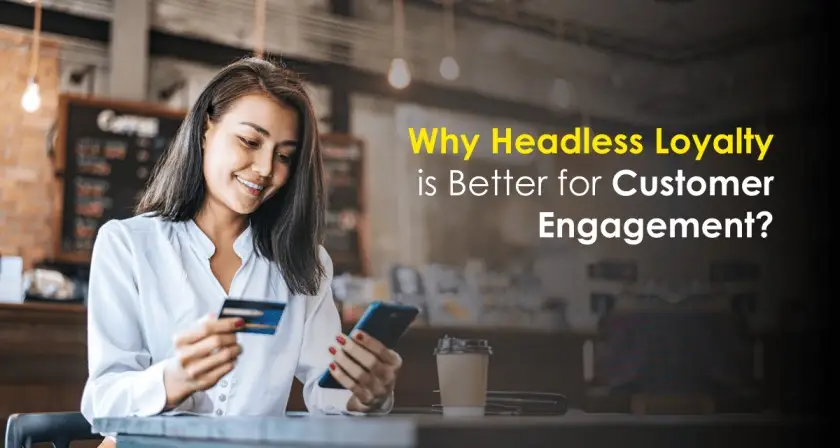Today’s customers look forward to a seamless rewards experience across multiple touchpoints. A headless loyalty and rewards program gives your members the best of all worlds.
What is Headless Loyalty?
Headless loyalty refers to a modern approach to creating and managing loyalty programs where the system’s front end (what users see and interact with) is separated from the back end (where data is processed and stored). This setup allows businesses to update and customize the customer experience on various platforms—like websites, mobile apps, and in-store kiosks—without needing to make changes to the core system that runs the loyalty program.
It’s called “headless” because the customer-facing part (the “head”) can change independently from the “body” (the back-end systems), offering flexibility, faster updates, and a personalized experience across different channels. Essentially, it helps businesses engage with their customers more effectively by making loyalty programs easier to manage and more adaptable to new technologies or customer preferences.
How do you run a loyalty program that covers multiple touchpoints and still manages to accomplish its goal – retain loyal customers?
That’s where the headless loyalty program comes in.
What Exactly is a Headless Loyalty Program?
A headless loyalty program refers to a loyalty program that operates independently from the core business systems and can be integrated with multiple channels and touchpoints. It is a flexible way of managing a loyalty system where the part that customers interact with (like websites or apps) is separate from the part where the data and rules live (the back end). This means businesses can change how the loyalty program looks and works for customers without having to mess with the complex parts that run it.
Unlike in the early 2000s, businesses no longer control the touchpoints customers use for shopping. Buyers now use multiple channels to purchase from a brand. For instance, a shopper looks up products on your website, checks out reviews on marketplaces or social media, and then visits your store to make a purchase.
Headless commerce purposefully decouples the backend from the frontend, customer-facing touchpoint, connecting them through easy APIs. This setup lets you modify any architecture component without affecting others or having to build modules from scratch. Headless commerce helps brands leverage any possible customer touchpoint into a sales opportunity while the commerce side is managed from a single backend.
So, how does this benefit your business?
Traditional Vs Headless Loyalty Programs
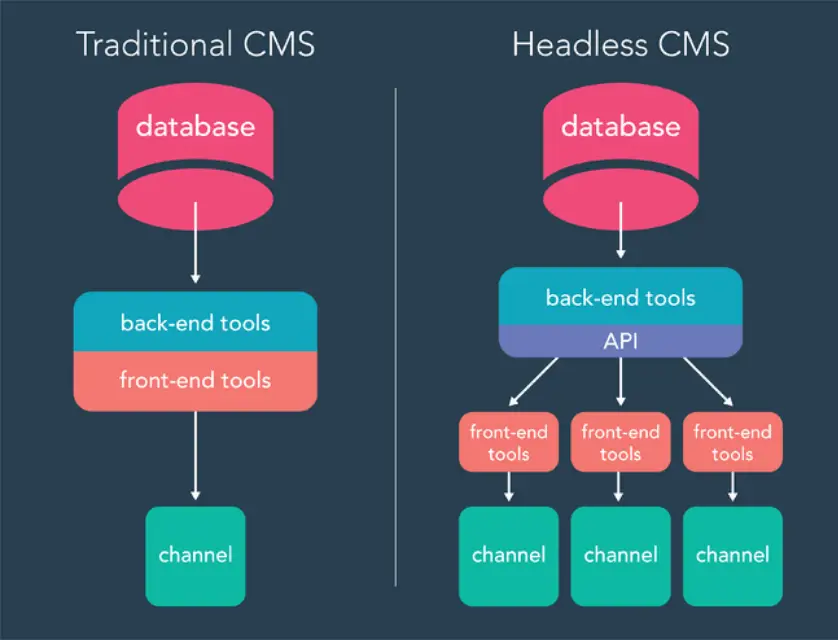
Image Source: HubSpot
When comparing headless and traditional loyalty programs, it’s essential to understand how each operates and the benefits they offer. Here’s a comparison highlighting seven key differences:
| Aspect | Headless Loyalty Programs | Traditional Loyalty Programs |
| Flexibility | High flexibility to change the customer interface without affecting backend systems. | Limited flexibility due to tightly coupled front-end and back-end systems. |
| Integration | Easier integration with other platforms and services thanks to an API-first approach. | Integration can be challenging and may require significant customization. |
| Customer Experience | Seamless and personalized across multiple channels, improving engagement. | May offer a consistent experience but struggles with personalization across all channels. |
| Innovation Speed | Faster updates and deployment of new features, keeping pace with market demands. | Slower to implement new features or changes, hindering responsiveness to market trends. |
| Scalability | Easily scales with business growth or demand spikes without major overhauls. | Scalability can be an issue, often requiring significant investment to upgrade. |
| Cost Efficiency | Lower costs over time due to modular updates and maintenance. | Higher long-term costs due to the need for complete system updates. |
| Security and Compliance | Modern security practices and easier compliance with data protection regulations. | Security is robust, but updating compliance measures can be cumbersome. |
Benefits of Headless Loyalty Programs
Headless loyalty programs offer several advantages to businesses aiming to enhance customer engagement and retention. These programs are built on modern technology that separates the front-end user experience from the back-end logic and data processing. Here are seven key benefits of adopting headless loyalty programs:
1. Flexibility:
They allow businesses to customize and update the customer interface without altering the back-end systems, providing the agility needed to adapt to market trends and customer preferences quickly.
2. Enhanced Customer Experience:
By enabling seamless integration across various digital touchpoints, headless loyalty programs ensure a consistent and personalized customer journey, regardless of how or where the customer interacts with the brand.
3. Faster Time-to-Market:
The decoupled nature of headless architecture means that new features and updates can be deployed more quickly, helping businesses to innovate and respond to competitive pressures with greater speed.
4. Scalability:
Headless loyalty programs can easily scale up or down based on demand, ensuring that businesses can accommodate growth without performance issues.
5. Cost Efficiency:
Over time, the modular approach to development and maintenance can result in lower costs, as businesses can update or add new features without a complete overhaul of the loyalty system.
6. Improved Integration Capabilities:
The API-first approach simplifies the process of integrating with other systems and technologies, such as CRM platforms and eCommerce systems, enabling a more holistic view of customer interactions and behaviors.
7. Data Security and Compliance:
With a focus on modern security practices, headless loyalty programs offer robust protections for sensitive customer data and ensure compliance with privacy regulations, building trust with customers.
Adopting headless loyalty programs positions businesses to offer a more engaging, responsive, and personalized loyalty experience to their customers, driving retention and value over time.
Implementation Strategies for Headless Loyalty Programs
Implementing a headless loyalty program involves strategic planning and a clear understanding of the technology and customer needs. Here are five key strategies to consider for a successful implementation:
1. Assess Your Needs:
Start by evaluating your business requirements, customer engagement goals, and the specific challenges you aim to address with a headless loyalty program. Understanding these aspects will guide the design and functionality of your program.
2. Choose the Right Technology Stack:
Select technology solutions that align with the headless architecture, including a robust API management platform, microservices for different functionalities, and a scalable cloud infrastructure. Ensure these technologies can integrate seamlessly.
3. Focus on Customer Experience:
Design the program with customer experience at its core. This means ensuring consistent and personalized engagement across all digital touchpoints, leveraging data to tailor rewards and communications to individual preferences.
4. Implement in Phases:
Roll out the headless loyalty program in manageable phases. Start with a pilot project to test the system’s functionality and gather feedback. Use insights from this phase to refine and expand the program incrementally.
5. Monitor and Optimize:
Continuously monitor the performance of your headless loyalty program using analytics tools. Look for ways to improve customer engagement, operational efficiency, and the overall effectiveness of the program. Be prepared to make adjustments based on customer feedback and changing market conditions.
By following these strategies, businesses can ensure a smooth transition to a headless loyalty program that meets the needs of both the company and its customers, driving long-term loyalty and growth.
Headless Loyalty Rewards Programs for Customer Engagement
Keeping customers invested in your brand can significantly boost retention and revenue.

6 Ways Headless Loyalty Program Improves Customer Engagement
1. Reach Out via Multiple Touchpoints
Today’s customers need accessible and real-time loyalty programs. This means brands need to integrate their programs within the customer journey effectively.
A study by Deloitte revealed that only 20% of its respondents embedded their programs for a complete, end-to-end customer experience using multiple touchpoints.
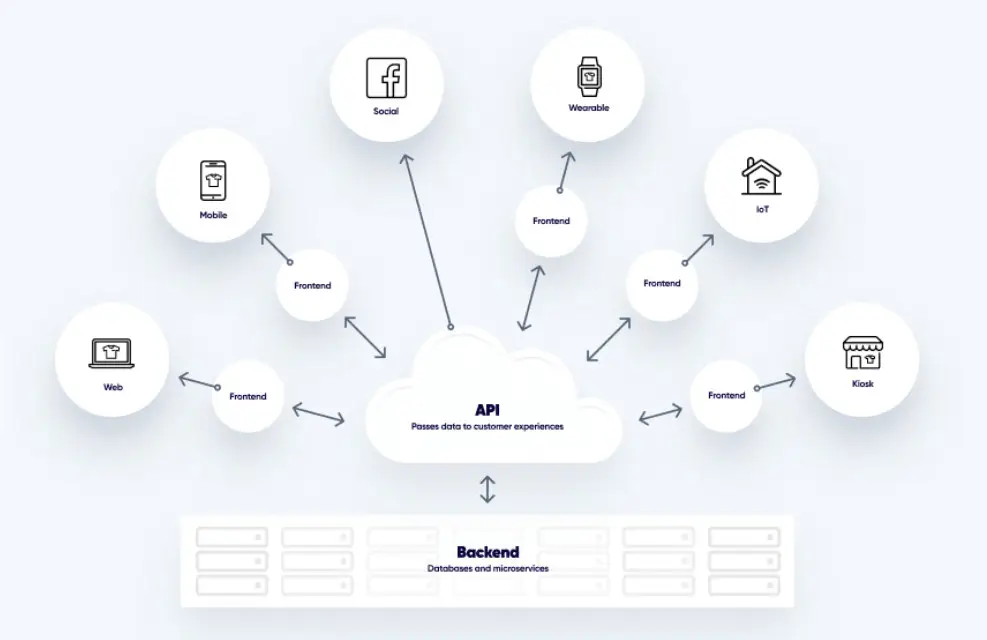
Headless API connects to a different frontend for each channel (Image Source: Fabric)
Since APIs can connect to different microservices in headless loyalty, your brand has ample opportunities to provide a customized and seamless reward experience through various channels.
2. Be Flexible and Scalable
In a headless loyalty program, you can quickly deploy changes, as the backend and front end are completely decoupled. As such, it’s better suited to respond to new opportunities and customer requests when compared to traditional architecture.
Customers stay engaged when your brand extends more freedom to earn and use their loyalty rewards in ways they see fit.
3. Personalize Marketing
While headless commerce can connect to several touchpoints, it can also collect data in one place (at the backend). You can use this data to build information-rich profiles and personalize marketing strategies for each customer or platform. Customized promotions ultimately make buyers feel special and entice them to stick around for more. Headless commerce allows you to instantly split-test what you build, this helps optimize the customer experience and conversion rate for brands. Changes can be deployed to any storefront your customers are shopping, passing data through to each and personalizing the entire customer journey.
Zinrelo, uses machine learning to segment loyalty program members into actionable clusters. We provide strategic suggestions to maximize revenues from these clusters.
4. Adapt to Marketplaces
In monolithic architecture, businesses need to add capabilities in hardware and software to connect marketplaces with their rewards program.
But with headless commerce, you don’t have to adapt your entire system for each marketplace. You can easily work around with APIs and do so quickly. This makes it convenient for loyal customers to purchase from you online.
5. Pass on Cost Benefits to the Customer
A headless setup is less expensive than traditional commerce in the long run for deploying constant updates, acquiring new technology and recruiting experts. Plus, it makes managing content much easier than a standard CMS (content management system).
The costs you save can be passed on as benefits to the customer in reward points, referral bonuses, and more.
6. Provide a Superior Experience
Soon, headless commerce will be commonplace, given the current speed of technological evolutions. Moreover, the benefits are significant, and global digital transformation is already in motion. Headless gives a business a lot more control over the customer experience by allowing brands to build whatever frontend experience they want. A headless loyalty software can support a wide array of screens and devices, with the ability to create multiple frontends that are attached to one backend.
Headless loyalty programs help you keep up with changing times, sharpening your competitive edge, and providing a superior customer experience. When loyalty members see updated features, they’re more willing to return to you.
Brands need to harness the creative, omnichannel experience, to get shoppers’ attention, convert shoppers into customers, and build those relationships.
A headless loyalty program empowers brands to create incredible shopping experiences for their customers. You can sell anywhere without any constraints on design or development.
Key Components of Headless Loyalty Software
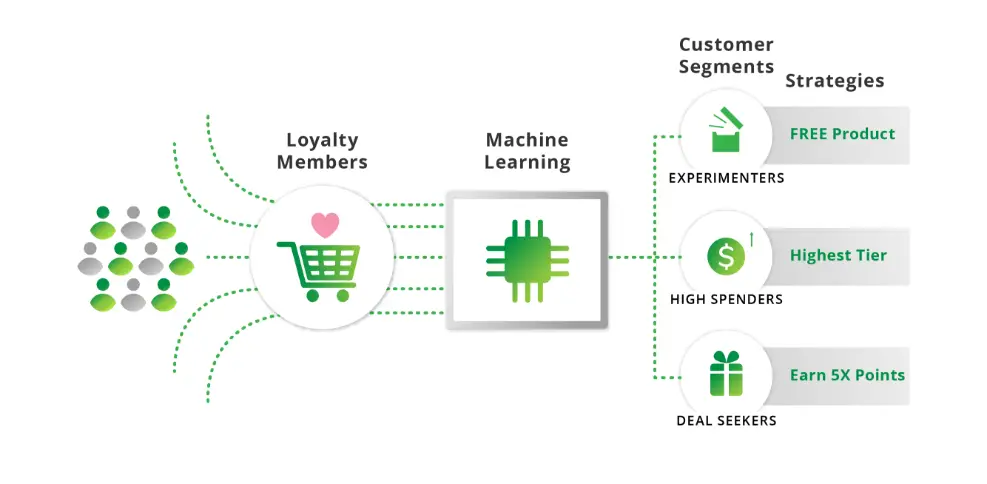
The key components of headless loyalty platform are designed to offer businesses flexibility, scalability, and the ability to provide a personalized customer experience across various digital touchpoints. Understanding these components is crucial for implementing a successful headless loyalty program. Here they are:
1. API-First Design:
The software is built with an application programming interface (API) at its core. This allows for easy integration with various systems and platforms, enabling seamless communication between the loyalty program’s back-end and front-end.
2. Decoupled Architecture:
This means the back-end (server-side operations, data storage, and processing) and the front-end (user interface and experience) are separate. Such separation allows developers to update or change one part without affecting the other, leading to faster updates and enhancements.
3. Microservices:
The software utilizes a collection of small, independent services that perform specific tasks. These microservices can be developed, deployed, and scaled independently, making the system more resilient and easier to manage.
4. Scalability:
Headless loyalty software can handle increased loads by scaling resources up or down as needed. This flexibility ensures that businesses can grow their loyalty programs without worrying about the limitations of their technology infrastructure.
5. Personalization Engine:
A component that uses data analytics and machine learning to tailor rewards, communications, and promotions to individual customers. This engine improves engagement by ensuring that customers receive offers and messages that are relevant to their interests and behaviors.
6. Omnichannel Support:
The ability to integrate with multiple channels (e.g., web, mobile, social media, in-store) ensures a consistent and personalized customer experience across all touchpoints. This is crucial for engaging today’s digitally savvy consumers.
7. Security and Compliance:
Robust security features protect sensitive customer data, while compliance with regulations (like GDPR) ensures that the loyalty program operates within legal boundaries. This component builds trust between the business and its customers.
8. User and Role Management:
This allows businesses to define roles and permissions within the loyalty program’s management system, ensuring that only authorized personnel can access certain functionalities.
9. Analytics and Reporting:
A comprehensive analytics suite provides insights into customer behavior, program performance, and ROI. This data is crucial for making informed decisions and optimizing the loyalty program over time.
By focusing on these components, businesses can leverage headless loyalty platform to create flexible, personalized, and scalable loyalty programs that meet the evolving needs of their customers.
Ready to Build Your Loyalty Program With Zinrelo?
Learn how our headless loyalty platform can transform your business.
Headless Rewards Programs Examples:
1. Amazon Loyalty Program
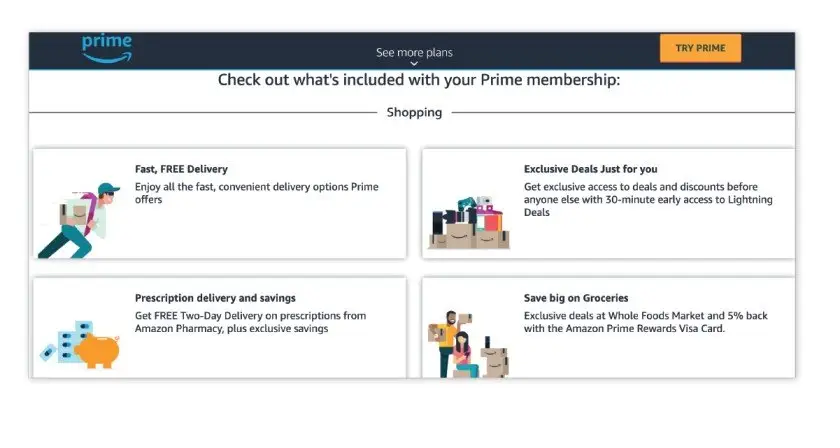
Amazon is a global brand in retail eCommerce. Considering the scale at which it operates, its loyalty program – Prime – needs to be agile and flexible. Amazon uses microservices to provide users with a richer rewards experience. While Prime has overlapping rewards, this microservices architecture also helps personalize rewards for each member and allows easy redemption.
2. BestBuy Rewards Program
BestBuy.com is another eCommerce retail giant, especially in the US. Following Amazon’s footsteps, the company invested in headless architecture to manage its loyalty membership program. In doing so, they shifted focus from being retail- and transaction-led to customer relationship-driven. Perks like free shipping and instant discounts make its loyalty program highly responsive.
Make the Switch to Headless Loyalty
If you want to stay ahead of the technological and customer engagement curve, investing in a headless loyalty program is imperative.
Zinrelo’s API-enabled loyalty platform enables businesses to launch a customer loyalty program. Zinrelo is a modern-day API-driven loyalty rewards platform that maximizes repeat sales and per-customer revenue through 360-degree customer engagement. We make the switch for businesses simplified through our solutions. Now customer engagement gets even more simplified.
